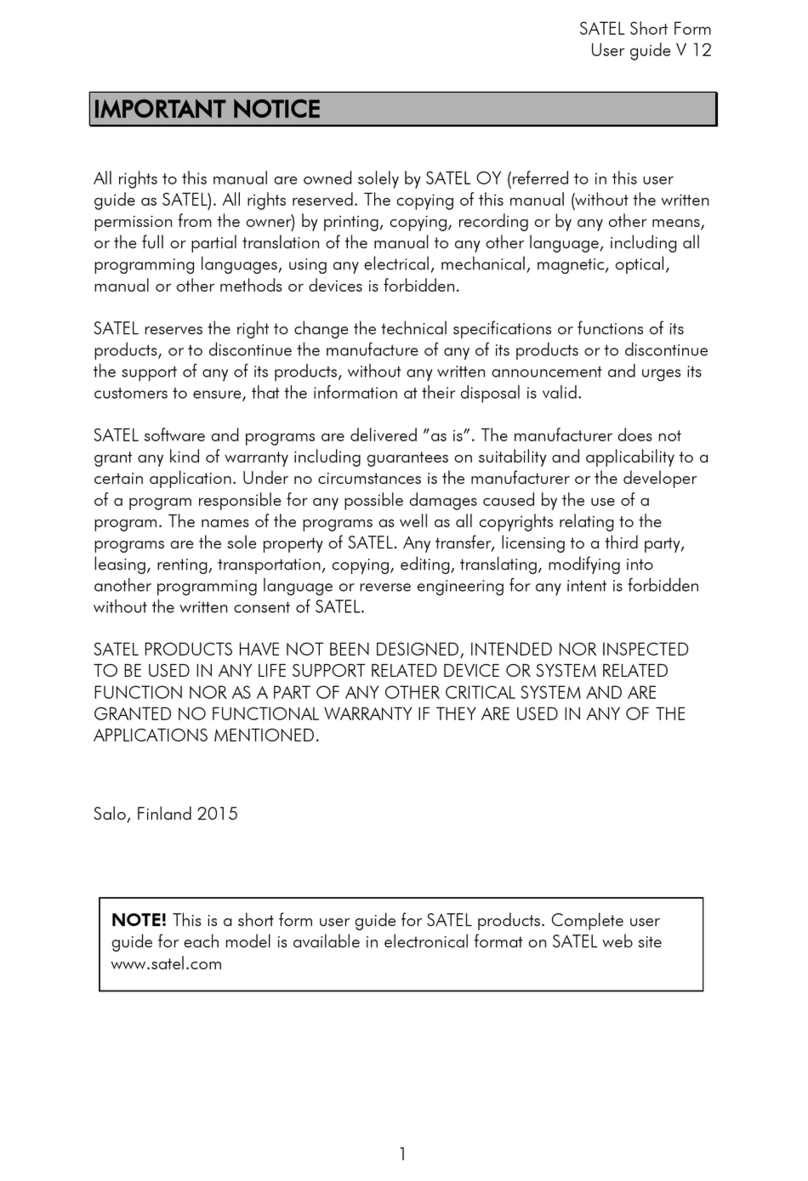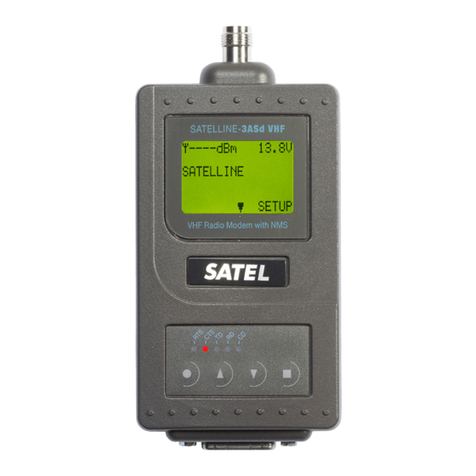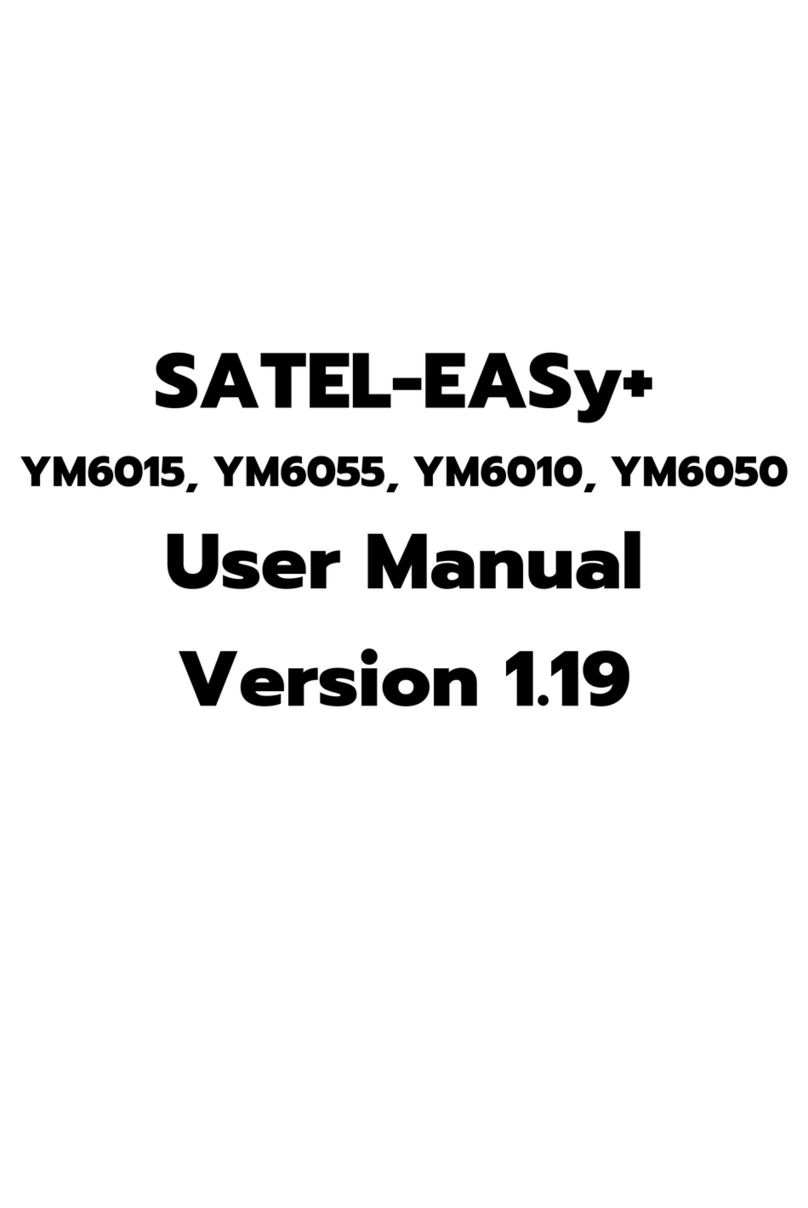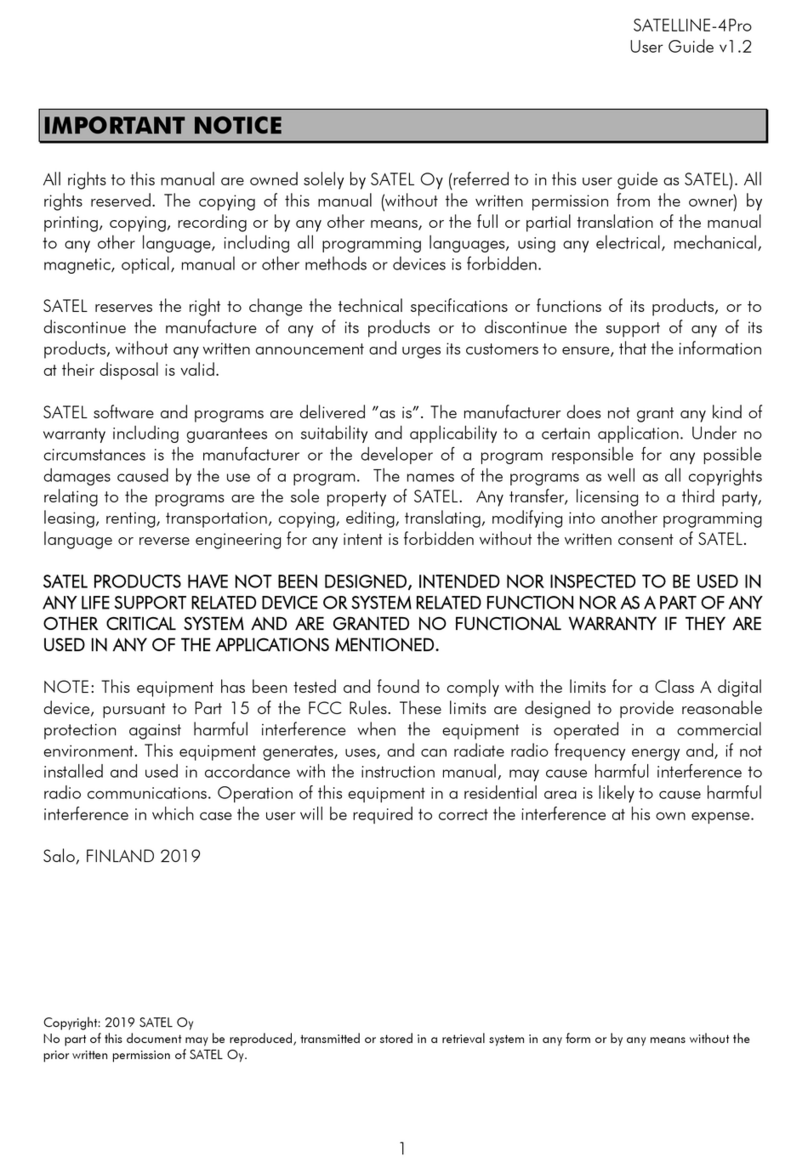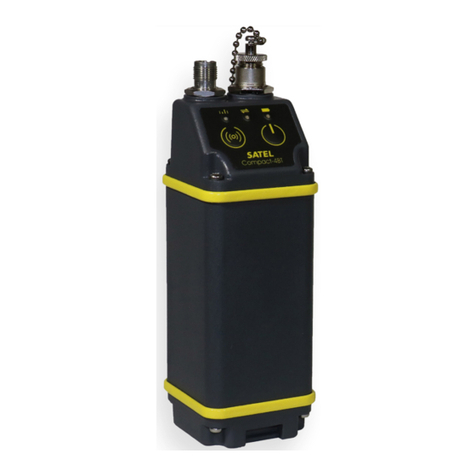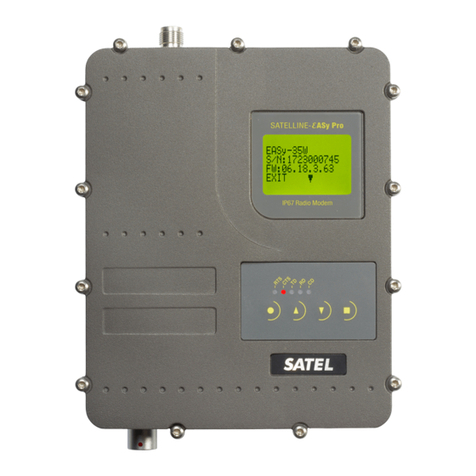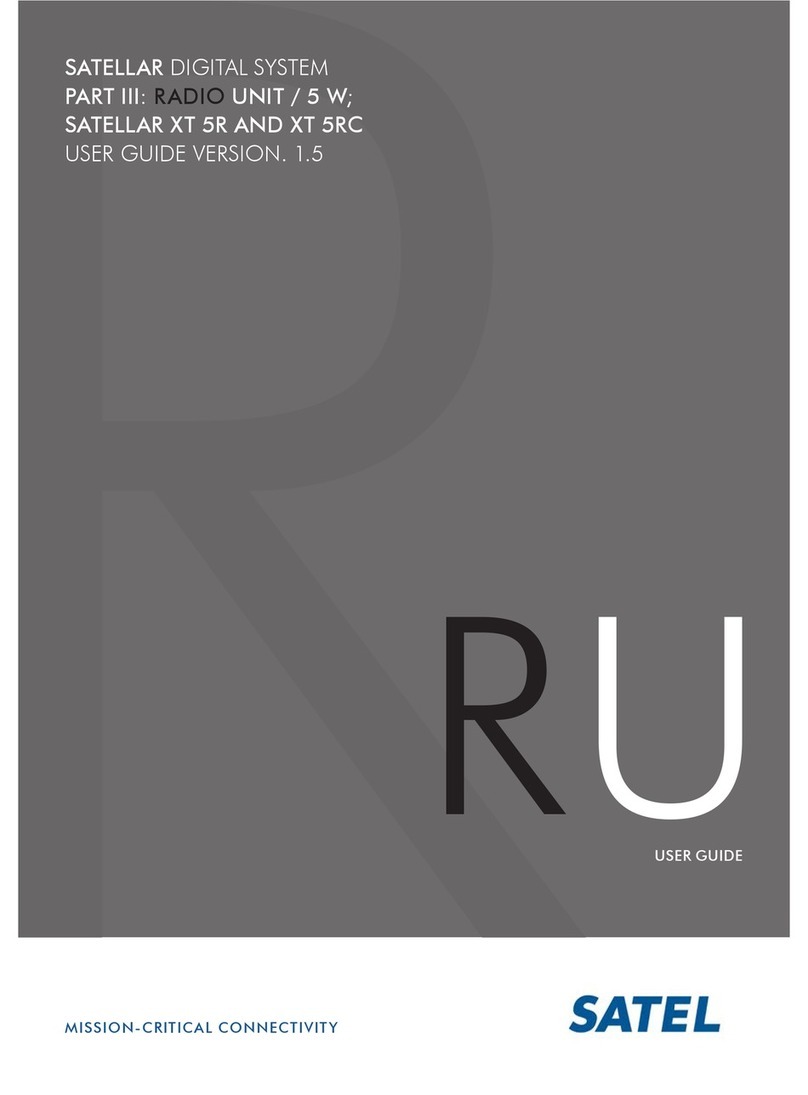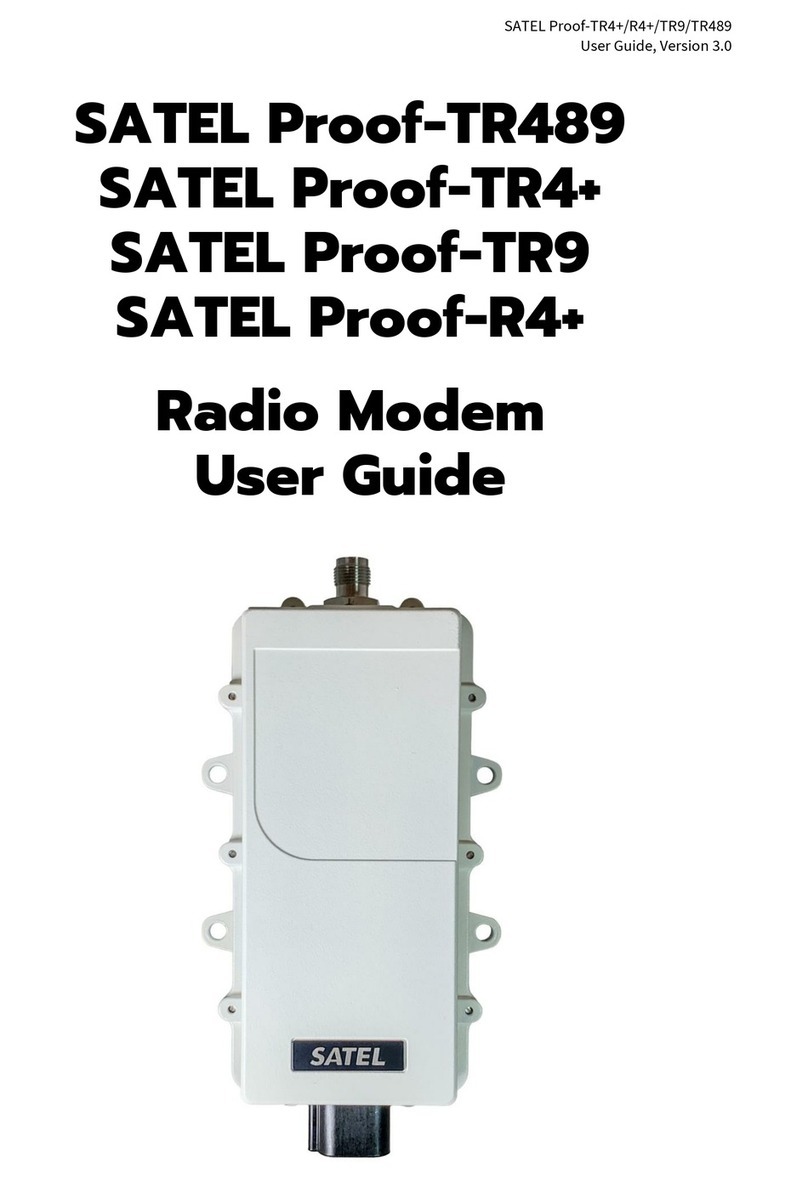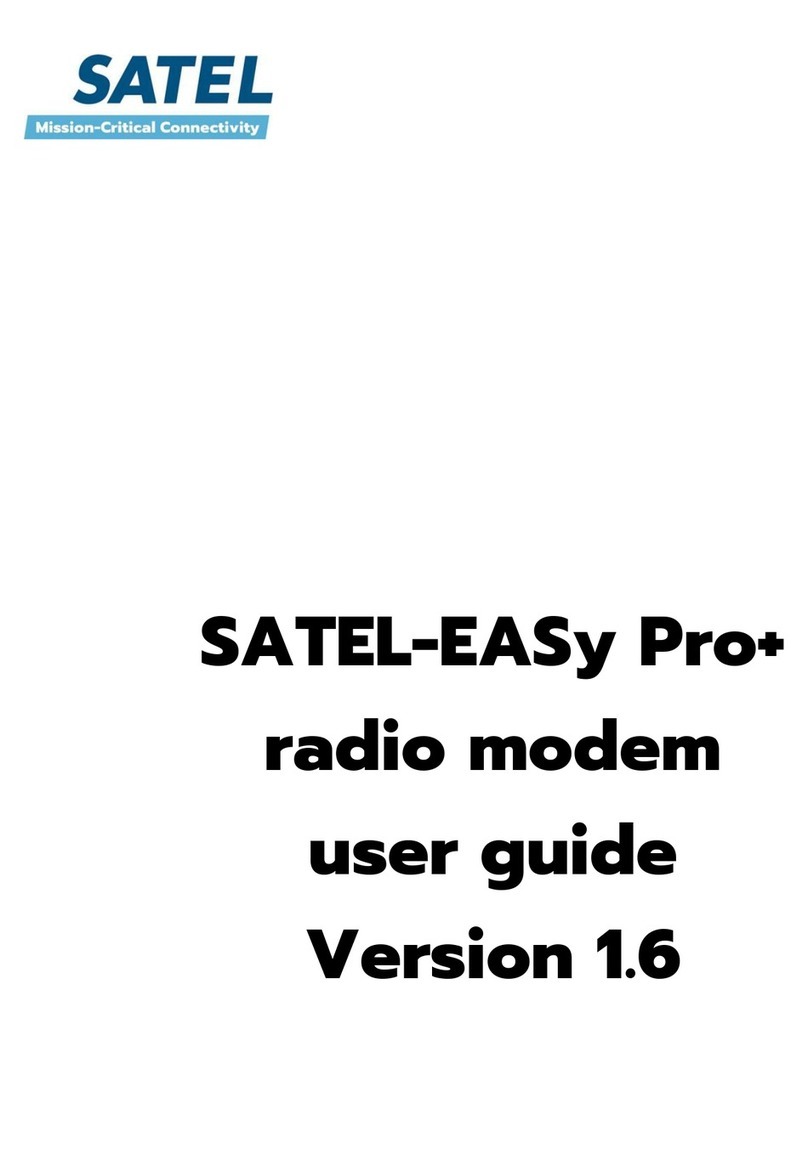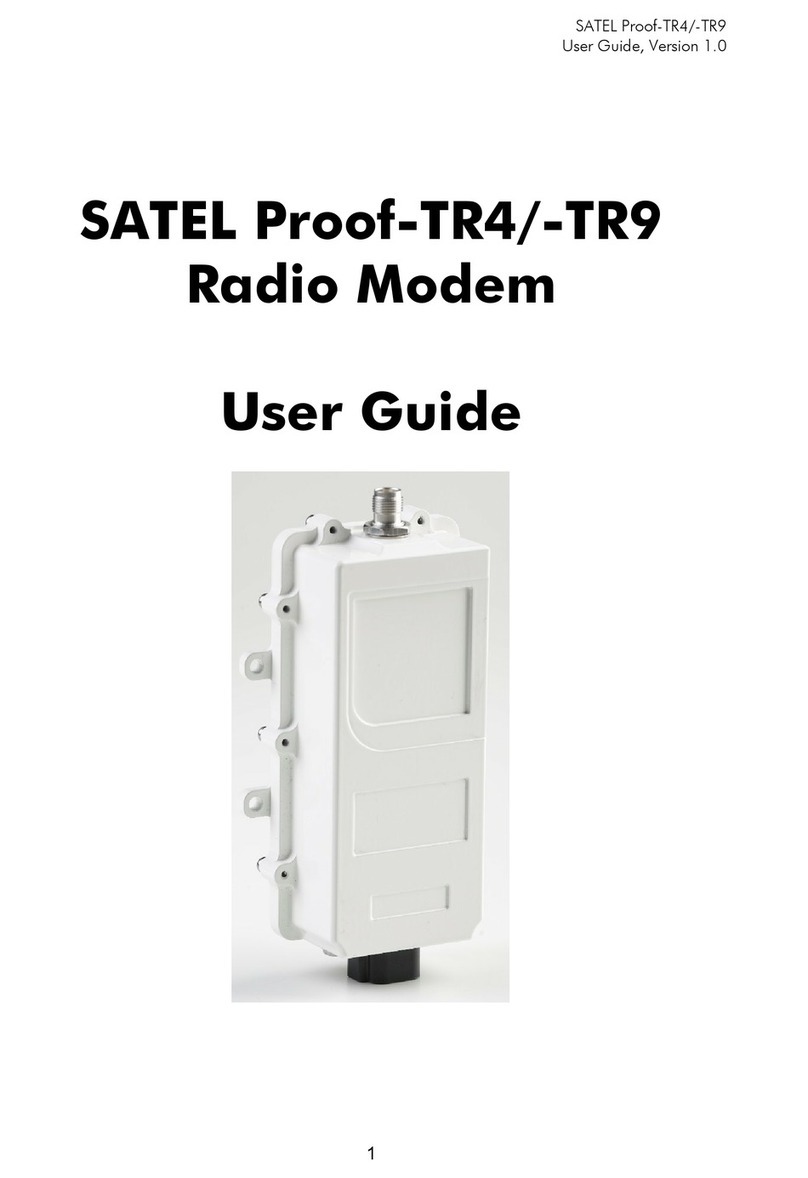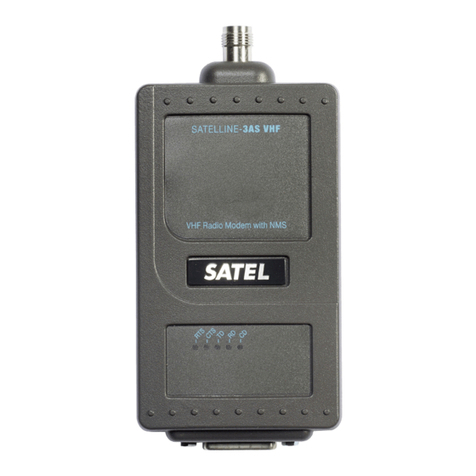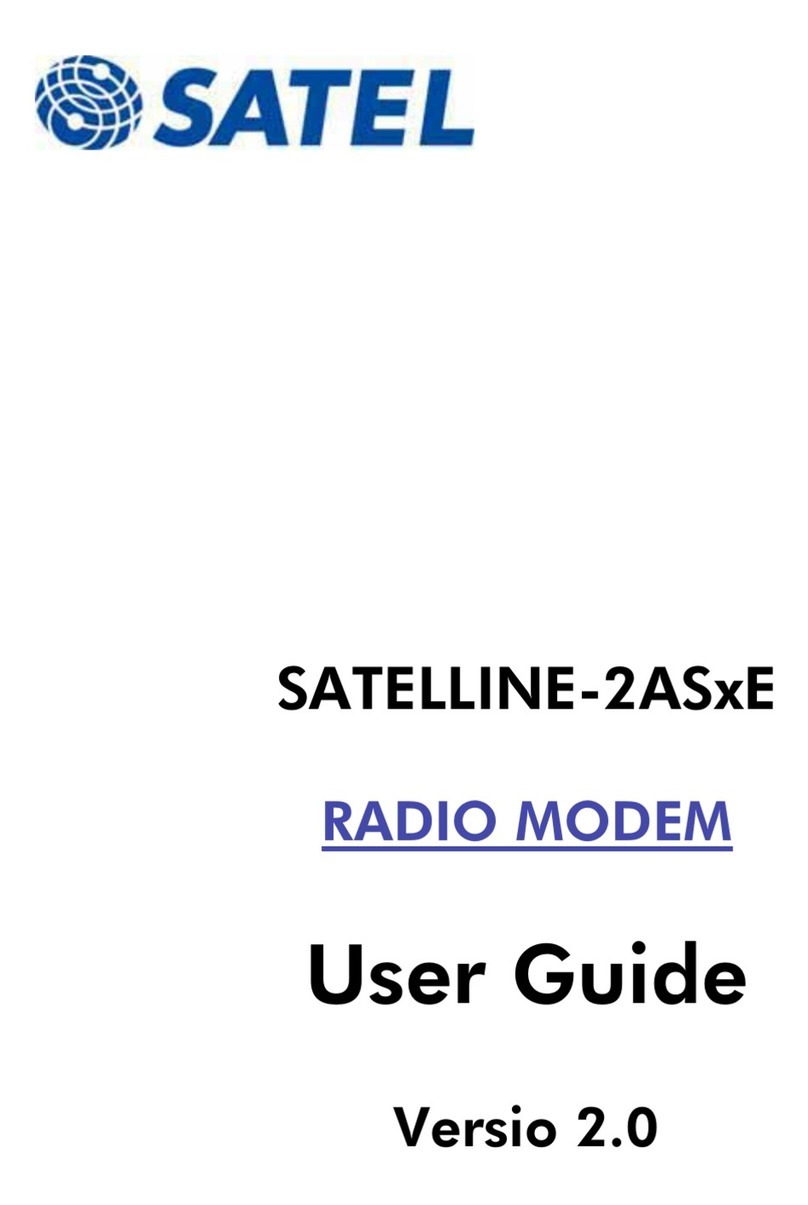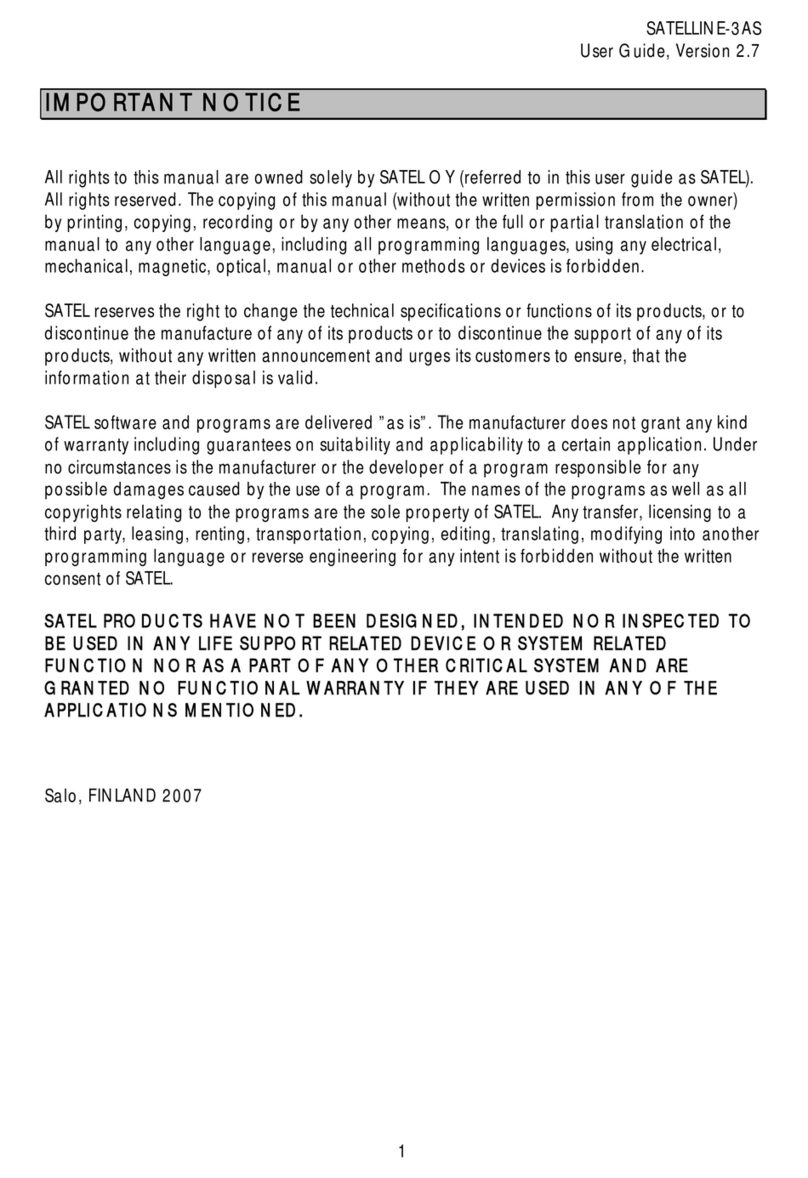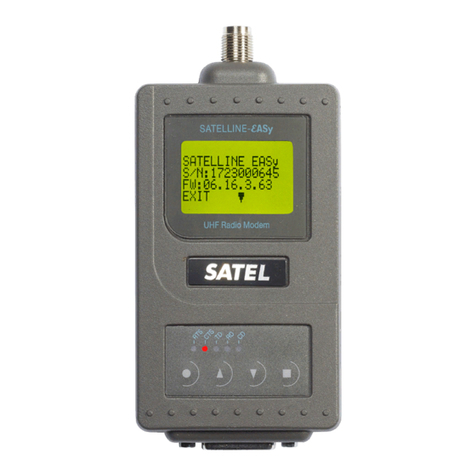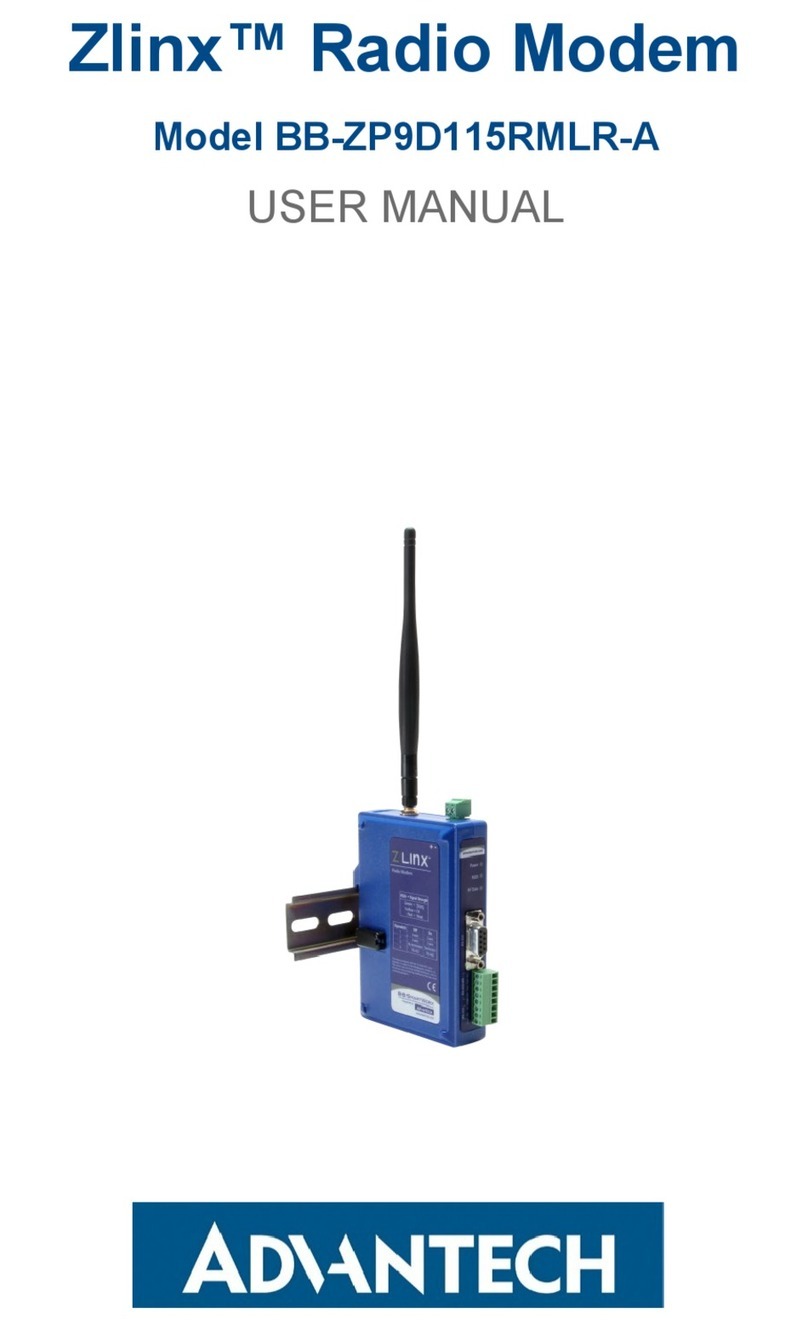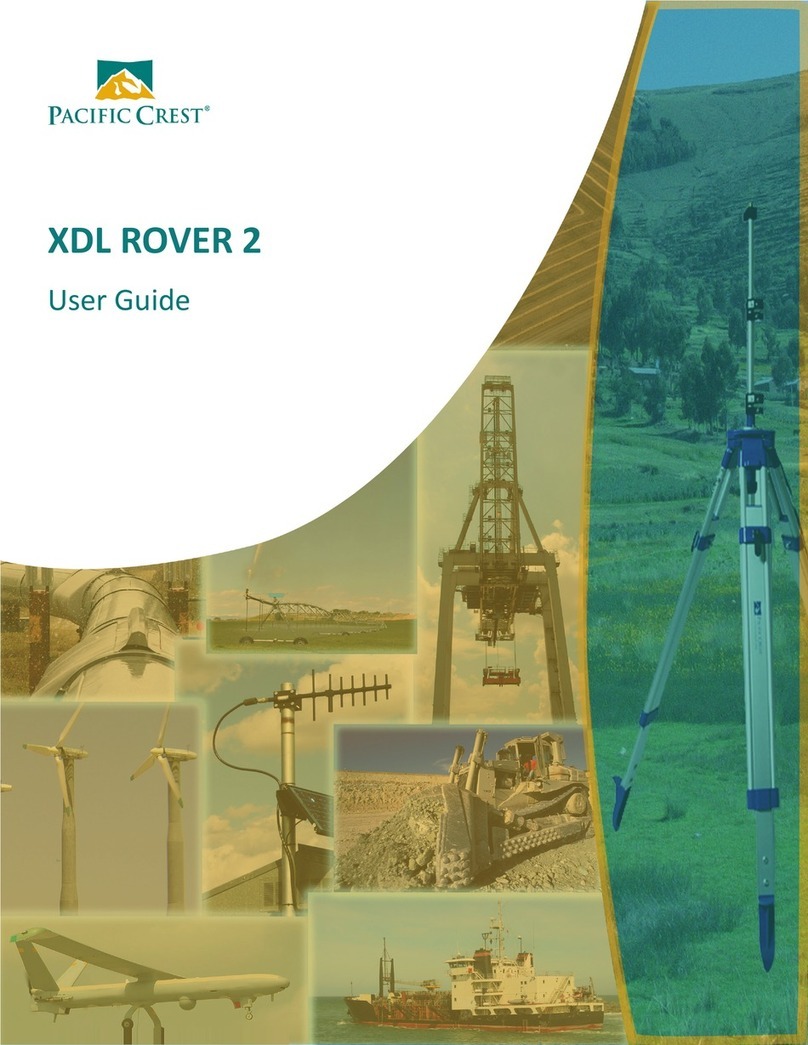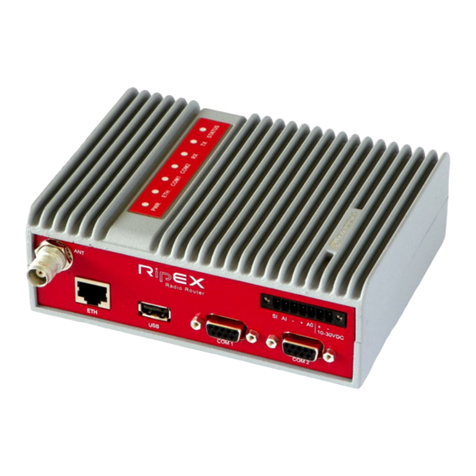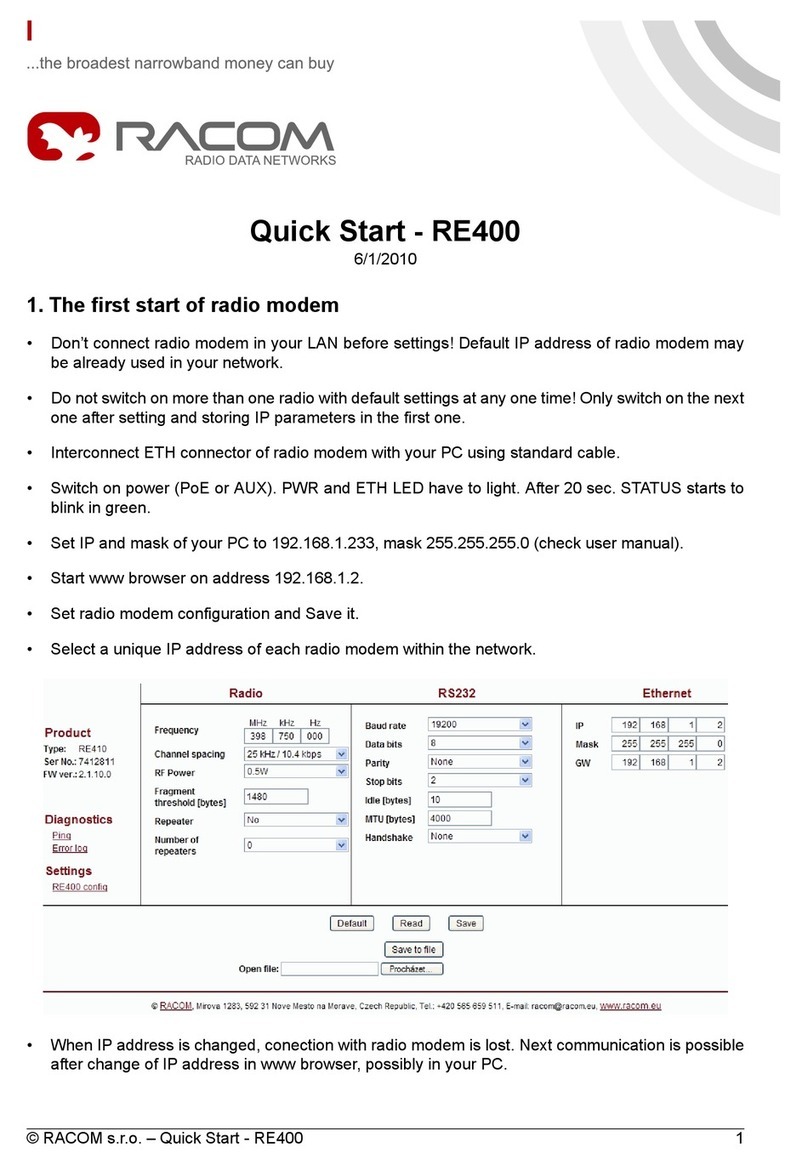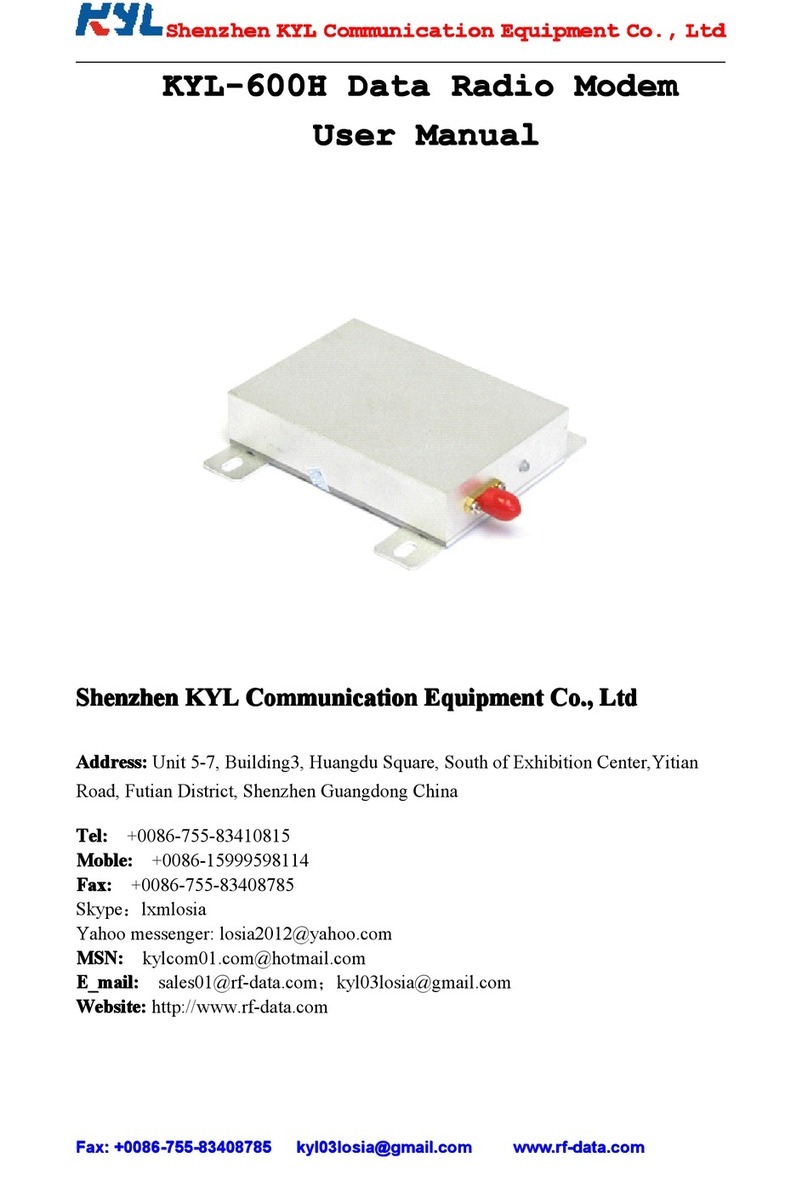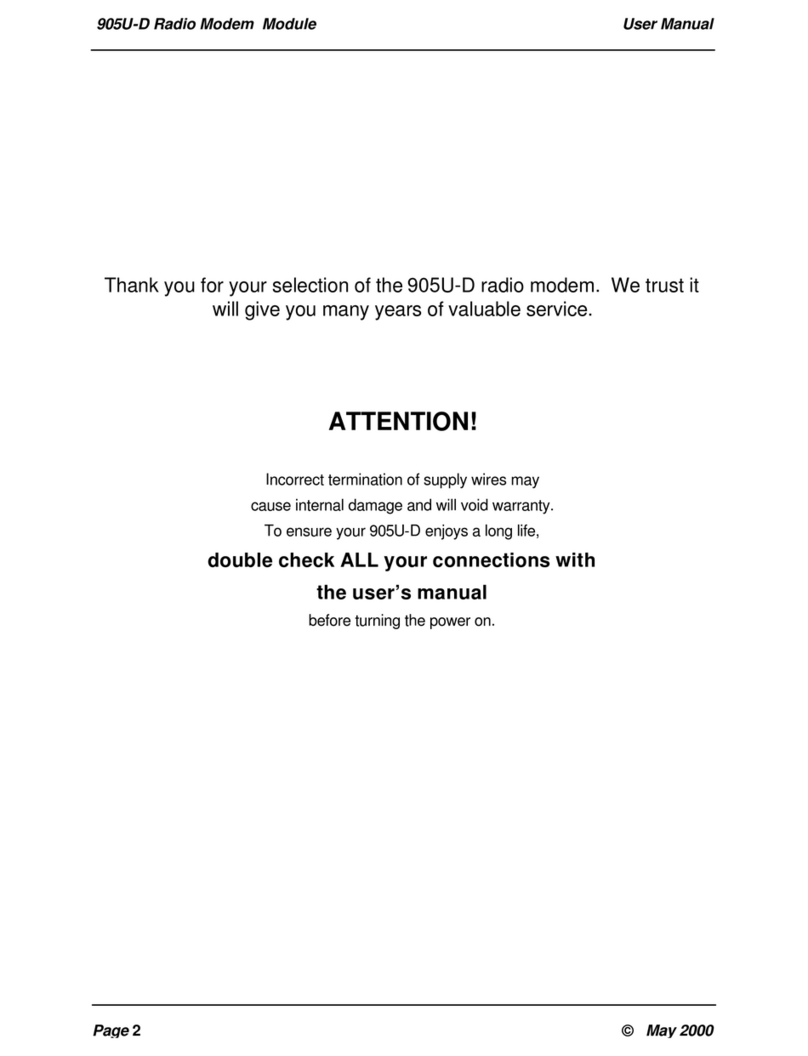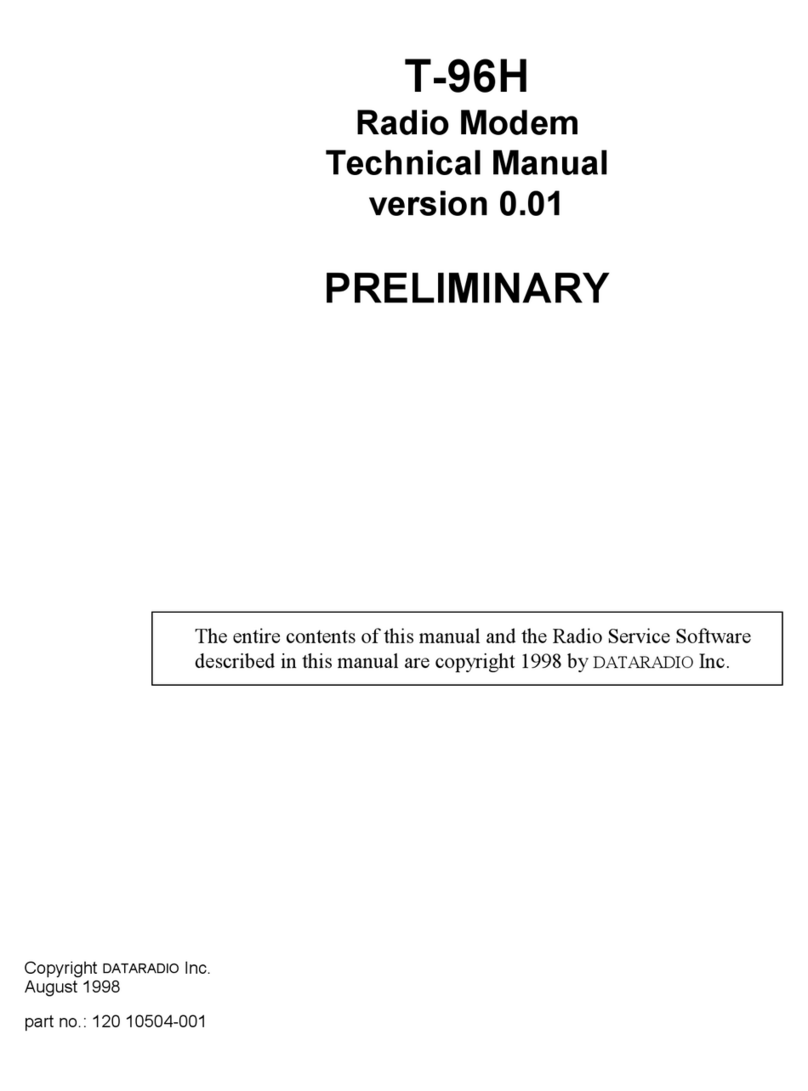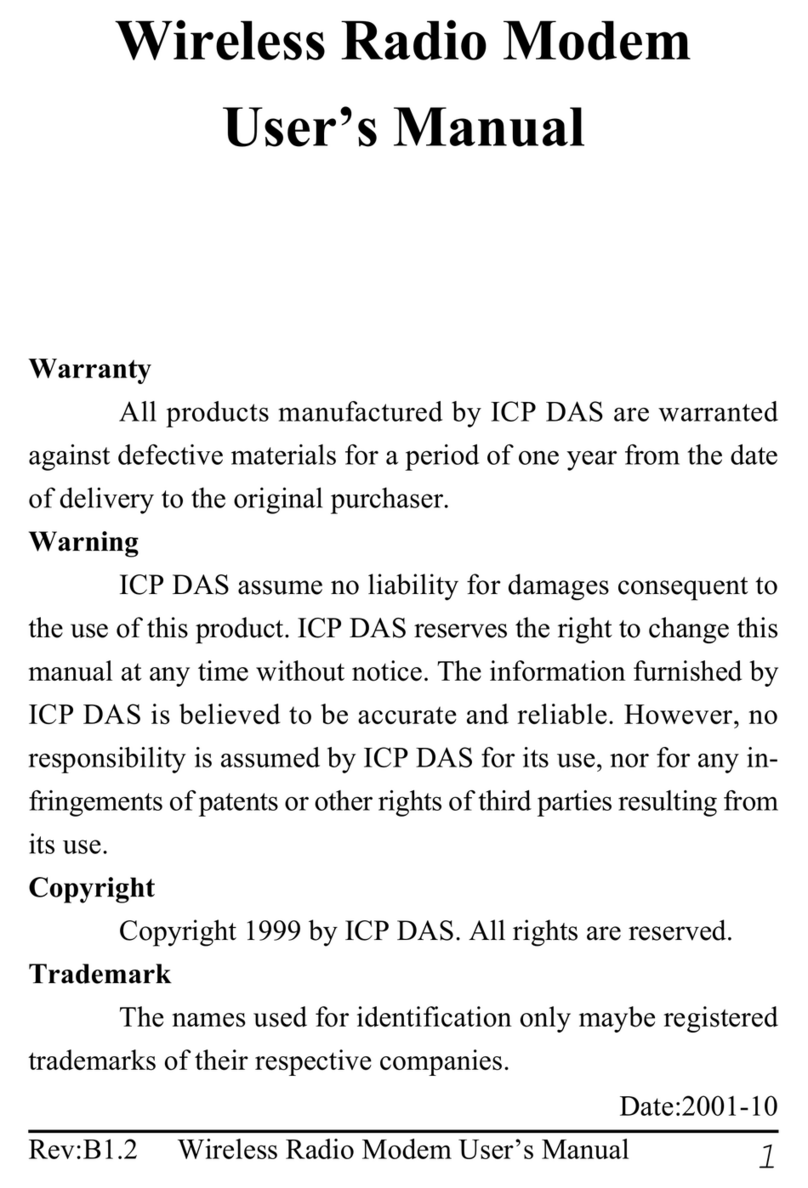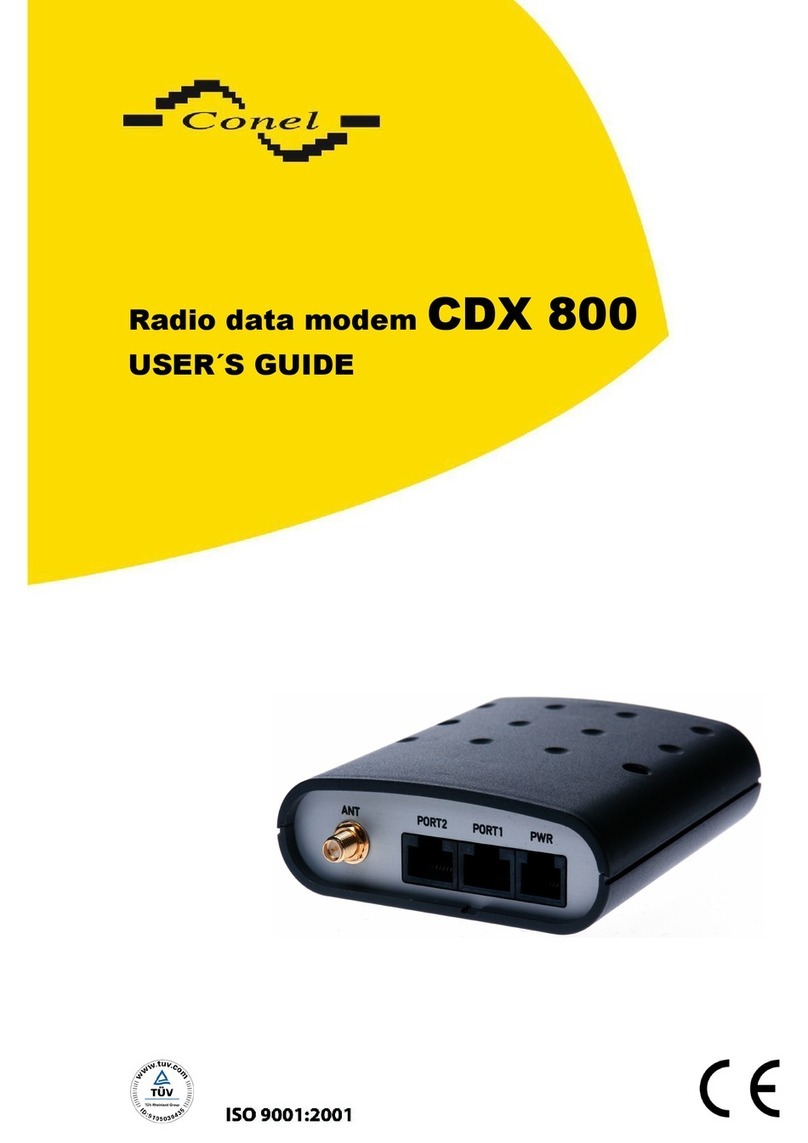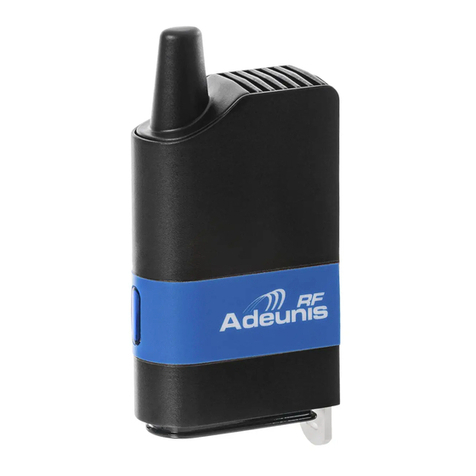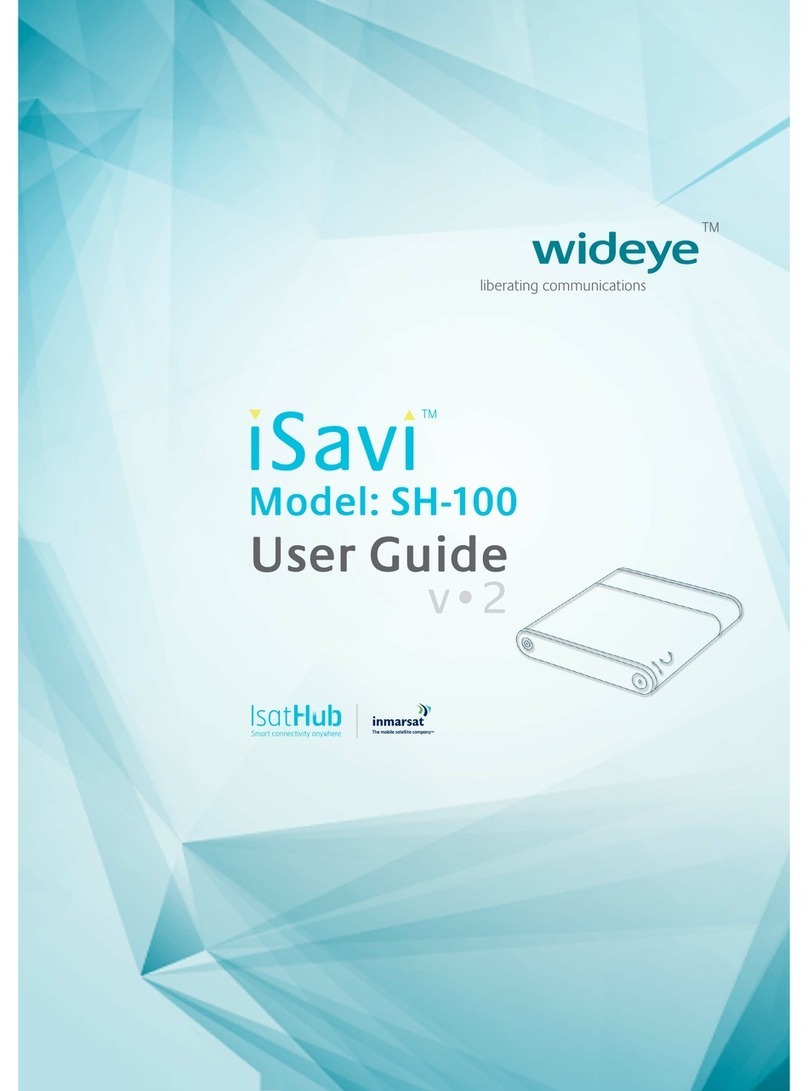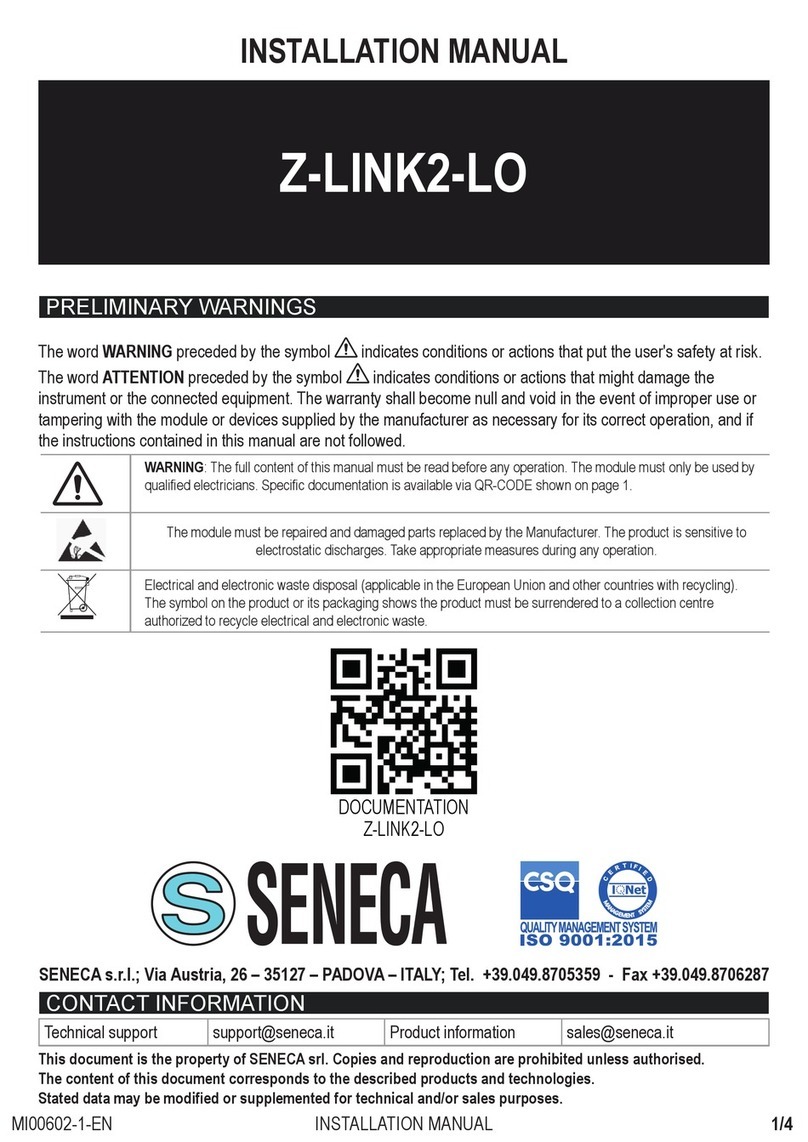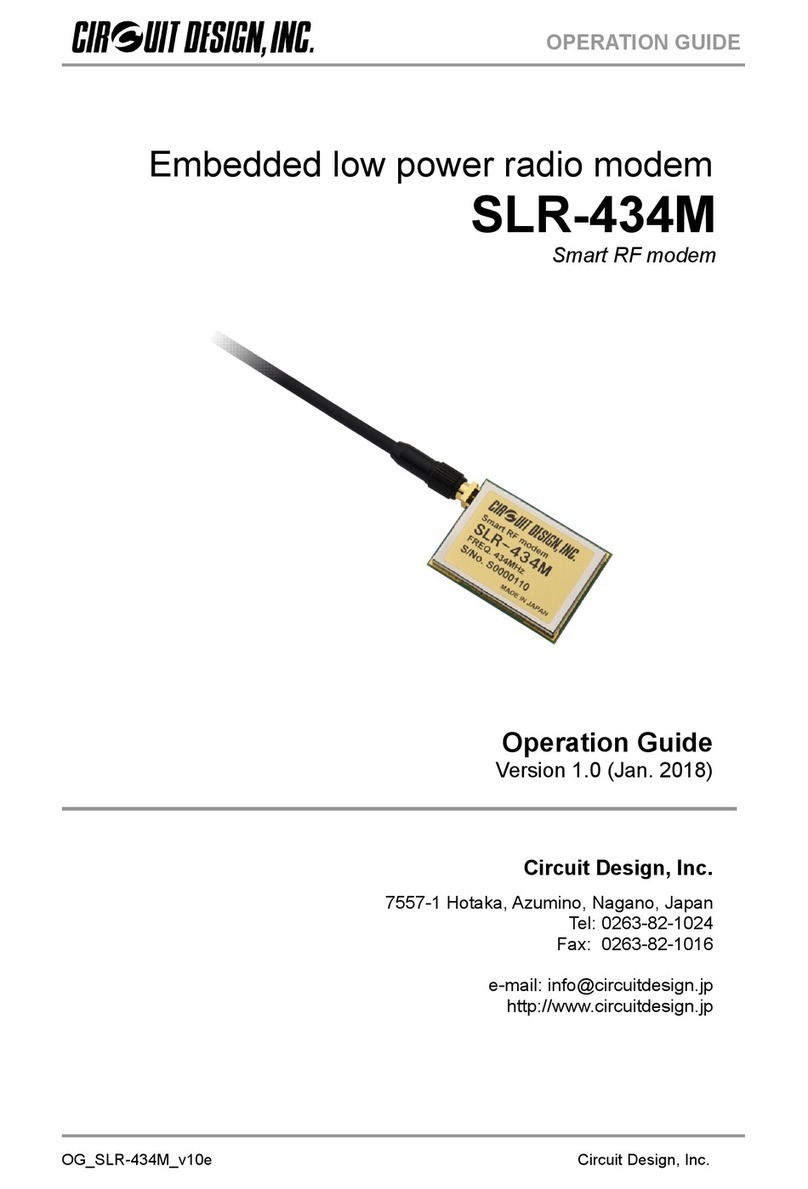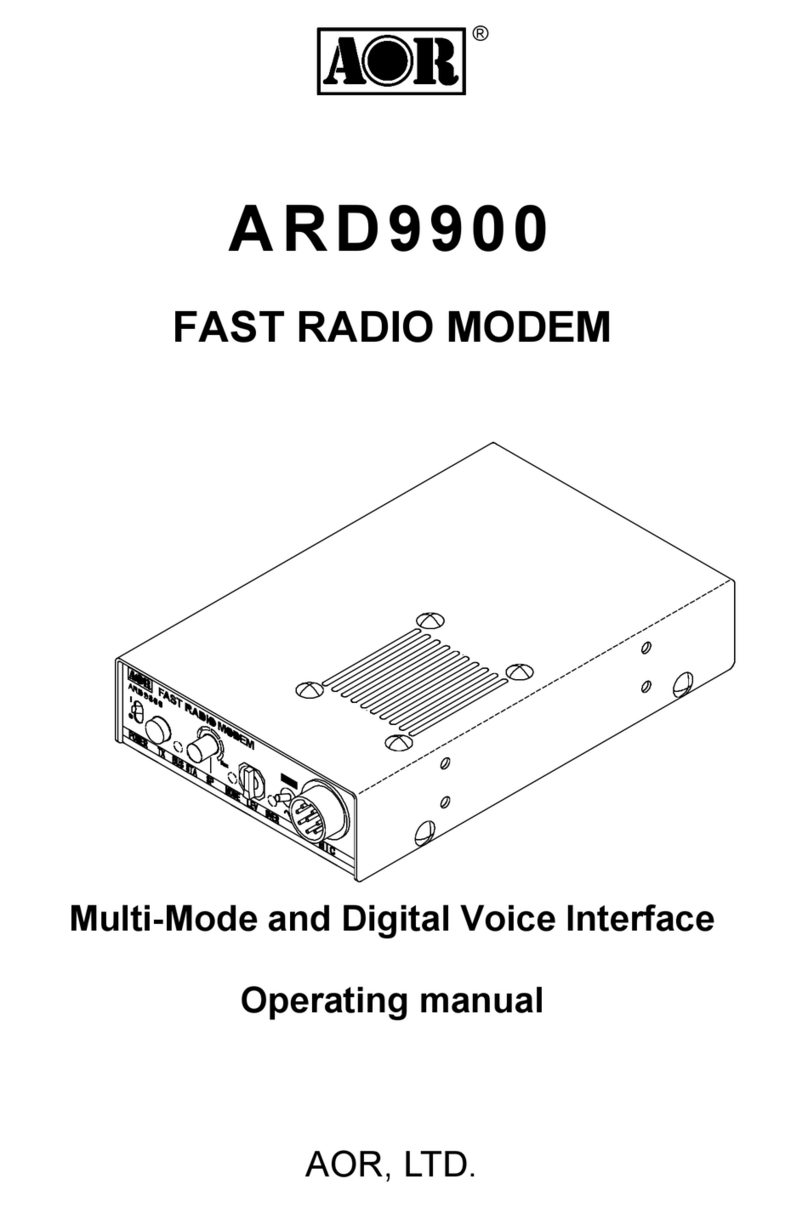SATELLINE-3AS and SATELLINE-3ASd
3
6SETTINGS.................................................................................................... 25
6.1 Changing the settings using terminal ................................................... 25
6.1.1 Frequency......................................................................................................... 26
6.1.2 Output power and sensibility .............................................................................. 27
6.1.3 Addressing........................................................................................................ 28
6.1.4 Serial port settings ............................................................................................. 29
6.1.5 Special functions ............................................................................................... 30
6.1.6 Tests................................................................................................................. 31
6.1.7 Restoring factory settings.................................................................................... 31
6.2 Changing the settings using the display ............................................... 32
6.2.1 Frequency......................................................................................................... 33
6.2.2 Addressing........................................................................................................ 34
6.2.3 Serial port settings ............................................................................................. 35
6.2.4 Special functions ............................................................................................... 36
6.2.5 Tests................................................................................................................. 36
6.2.6 Restoring factory settings.................................................................................... 37
6.2.7 Contrast............................................................................................................ 37
6.3 Changing the settings using SL-commands........................................... 38
6.3.1 Frequency......................................................................................................... 38
6.3.2 Addressing........................................................................................................ 39
6.3.3 Special functions ............................................................................................... 39
6.3.4 Forming of the SL Command ............................................................................. 40
7INSTALLATION............................................................................................ 42
7.1 The installation of a radio modem........................................................ 42
7.2 Interface Cable Connections.................................................................. 43
7.2.1 RS-232 Wiring .................................................................................................. 43
7.2.2 RS-422 Wiring .................................................................................................. 45
7.2.3 RS-485 Wiring .................................................................................................. 45
7.2.4 Power supply..................................................................................................... 45
7.3 Antenna Installation ............................................................................. 46
7.3.1 Hand portable equipment.................................................................................. 46
7.3.2 Equipment installed in vehicles ........................................................................... 46
7.3.3 Master station ................................................................................................... 46
7.3.4 General rules.................................................................................................... 47
8SYSTEM DESIGN .......................................................................................... 50
8.1 System Configurations........................................................................... 50
8.1.1 Factors affecting quality and distance of the radio connection.............................. 50
8.1.2 Radio field strength............................................................................................ 51
9CHECK LIST.................................................................................................. 52
